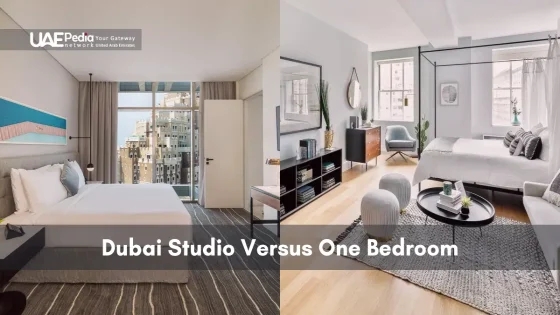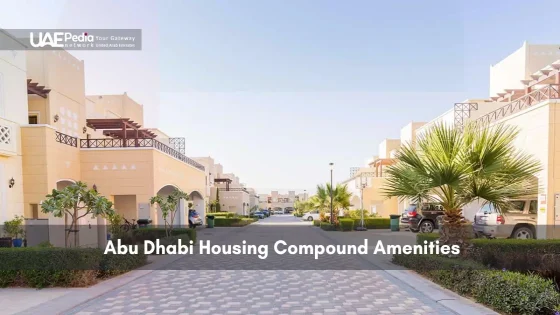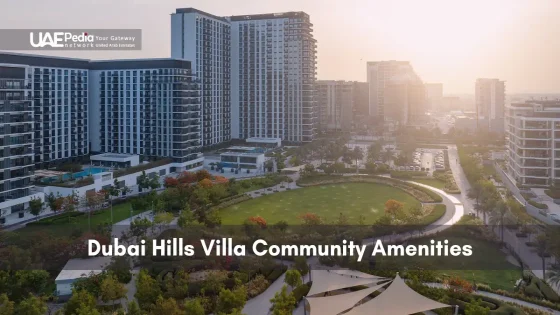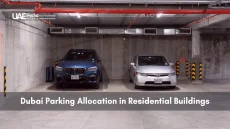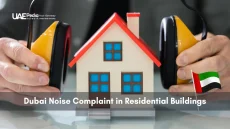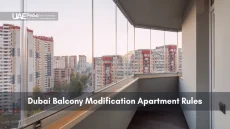Did you know 63% of new UAE residents reconsider their housing choices within six months of arrival? The glittering skyline offers endless possibilities, but finding your ideal space requires savvy navigation. Let’s unpack how two popular options stack up for modern city dwellers.
Sprawling high-rises and cozy neighborhoods create a mosaic of urban lifestyles here. Whether you prioritize walkability to cafés or extra square footage for weekend gatherings, your choice shapes daily rhythms. We’ve walked these sun-baked streets and chatted with property experts to simplify your search.
Smaller units often surprise newcomers with smart layouts that maximize every inch. Meanwhile, slightly larger spaces provide room to breathe without breaking budgets. Location plays a huge role too – a central spot might mean trading space for shorter commutes to work or leisure hubs.
New UAE residents often reassess their accommodation within six months, highlighting the importance of evaluating studio and one-bedroom options in Dubai’s diverse market. Studios (300–700 sq ft) offer cost-effective, open-plan layouts with lower maintenance and utility expenses, making them suitable for solo professionals and short-term stays. One-bedroom units (600–1 200 sq ft) provide distinct living, sleeping, and working zones, supporting privacy and customization for couples or remote workers. Location influences rent levels, commute times, and amenity access, with waterfront districts commanding higher premiums than suburban areas.
Studios typically yield 6–6.5 percent rental returns and reduce cleaning time by up to 30 percent, while one-bedroom flats appreciate at approximately 8 percent annually and host guests more frequently. Key decision factors include budget flexibility versus long-term comfort, hidden costs in different building types, and neighborhood social dynamics. Prospective tenants should map non-negotiables, project future needs, and compare total cost of occupancy—including DEWA charges and maintenance—to select the configuration that optimally aligns with lifestyle and investment goals.
- Budget flexibility vs. long-term comfort: What matters most right now?
- Hidden costs to watch for in different building types
- Neighborhood vibes that match your social habits
From Deira’s bustling markets to Dubai Marina’s waterfront energy, each area tells its own story. Let’s find yours.
Understanding the Concept of Studio and One-Bedroom Living in Dubai
Ever wondered how your morning routine changes based on your floor plan? Let’s explore two popular urban living styles shaping modern lifestyles here.
Open-Plan Efficiency: The All-in-One Solution
Compact units blend living, sleeping, and cooking areas into single creative spaces. Typically ranging from 300-700 sq. ft., these layouts attract those valuing simplicity. A young graphic designer in JVC shared: “My coffee machine sits three steps from my workspace – perfect for late-night project sprints.”
| Feature | Compact Units | Separate-Bedroom Flats |
|---|---|---|
| Average Size | 300-700 sq. ft. | 600-1,200 sq. ft. |
| Key Advantage | Cost-effective minimalism | Designated private zones |
| Ideal For | Solo professionals | Couples/remote workers |
Defined Spaces: Privacy Meets Practicality
Separate-bedroom configurations offer physical boundaries between daily activities. Business Bay residents often choose these 600-1,200 sq. ft. flats for work-life separation. The extra square footage allows creative customization – think reading nooks or yoga corners.
Location impacts functionality too. Waterfront areas tend to feature space-smart storage solutions, while suburban complexes might include walk-in closets. Your choice ultimately reflects whether you prioritize streamlined living or room to personalize.
Read More:
Comparing the Size, Layout, and Space Utilization
Imagine stepping into your home after a long day—does the layout welcome you with open arms or feel like a puzzle? Let’s decode how dimensions and design influence your daily groove.
Square Footage and Functional Layouts
Compact units average 400-600 sq. ft., where every inch serves multiple purposes. Picture foldable dining tables that moonlight as work desks, or Murphy beds that vanish into walls by sunrise. “My kitchen island doubles as a breakfast bar and project station,” notes a resident near Business Bay.
Separate-bedroom configurations typically offer 700-1,000 sq. ft., allowing distinct zones for cooking, lounging, and sleeping. These layouts shine for remote workers craving noise buffers between Zoom calls and Netflix nights.
Maximizing Limited Space vs. Embracing Roominess
Clever storage hacks transform tight quarters:
- Vertical shelving climbs unused wall space
- Ottomans with hidden compartments stash linens
- Mirrored surfaces create depth illusions
Larger flats reward occupants with breathing room—think reading corners bathed in natural light or workout areas beside floor-to-ceiling windows. A recent space optimization study revealed 68% of residents in roomier units host guests weekly versus 22% in compact homes.
Your choice hinges on whether you prefer a Swiss Army knife layout or dedicated spaces that evolve with your rituals. Both options prove that in urban living, smart design trumps raw square footage every time.
Dubai Studio Versus One Bedroom: Key Lifestyle Considerations
Does your ideal evening involve hosting friends for board games or unwinding with a book in solitude? How you answer reveals which layout might suit your rhythm best. Let’s explore how different units cater to varied daily needs.
Entertaining and Privacy Needs
Open-concept spaces work wonders for solo dwellers craving efficiency, but walls become golden when sharing moments. A marketing executive in Jumeirah Lakes Towers notes: “My separate living area lets me host colleagues without my bed becoming a conversation piece.”
Remote workers often prefer defined zones – kitchen noises stay contained during calls. Couples appreciate having personal retreats too. Consider these factors:
- Frequency of visitors – weekly dinners vs. occasional drop-ins
- Work-from-home requirements – video call privacy matters
- Noise preferences – open layouts amplify morning blender sounds
Furnishing, Minimalism, and Customization
Compact units demand clever multifunctional furniture – think sofa beds with storage drawers. Larger flats allow creative expression through:
- Statement lighting fixtures
- Gallery walls showcasing travel photos
- Dedicated hobby corners
Communities near metro stations often feature shared rooftop lounges and co-working spaces. These building perks extend your living area socially without sacrificing square footage. Ask yourself: Do I want a curated capsule home or a canvas for self-expression?
Analyzing Maintenance, Costs, and Investment Value
What if your housing choice today could fund tomorrow’s adventures? Let’s crunch numbers on upkeep expenses and growth potential to help you invest wisely.
Keeping Up With Daily Demands
Compact spaces typically require 30% less cleaning time monthly compared to larger units. Utility bills follow similar patterns – DEWA data shows 400-600 sq. ft. homes average AED 700/month, while 700-1,000 sq. ft. units hit AED 1,100.
| Factor | Compact Units | Separate-Bedroom |
|---|---|---|
| Annual Maintenance | AED 3,500-5,000 | AED 6,000-9,000 |
| AC Efficiency | 15-20% better | Standard |
| Common Repairs | Minor fixture updates | Appliance replacements |
Growth Potential Unveiled
Bayut’s 2023 report reveals 6.2% higher rental yields for compact units in prime areas. Yet separate-bedroom configurations appreciate faster – 8.3% annual growth versus 5.9% for smaller spaces.
Downtown districts command 22% premium rents compared to suburban neighborhoods. A property consultant shared: “Investors balancing cash flow and equity growth often mix unit types across portfolios.”
First-time buyers should weigh initial savings against five-year projections. Those prioritizing flexibility might lean toward lower-maintenance options, while long-term planners could benefit from spacious layouts gaining value.
Exploring Top Neighborhoods and Areas in Dubai
Location isn’t just about coordinates—it’s about how your neighborhood becomes your daily backdrop. Let’s explore three standout districts where lifestyle and layout intersect uniquely.
Highlights from Dubai Marina, JVC, and Deira
The waterfront energy of Dubai Marina attracts professionals craving walkable luxuries. Recent listings show 550 sq. ft. units here rent for AED 65k annually—20% higher than suburban spots. “Sunrise jogs along the pier make the premium worth it,” shares a tech worker in a 1-bedroom flat.
Jumeirah Village Circle (JVC) offers family-friendly vibes with parks and pet-friendly towers. Studios here average AED 35k/year, while 1-bedrooms hover near AED 55k. Deira’s historic lanes buzz with bargain hunters—expect rents 30% lower than newer areas, perfect for budget-conscious singles.
Regional Insights for Studios and One-Bedroom Rentals
Each area caters to specific needs:
- Waterfront zones: Ideal for compact units with premium amenities
- Suburban hubs: Better value for separate-bedroom layouts
- Historic districts: Prime for short-term rentals and cultural immersion
| Area | Studio Avg. Rent | 1-Bed Avg. Rent | Metro Access |
|---|---|---|---|
| Dubai Marina | AED 65k | AED 95k | 7-min walk |
| JVC | AED 35k | AED 55k | 15-min drive |
| Deira | AED 28k | AED 42k | 3-min walk |
Pro tip: Check building amenities like gyms or pools—they can offset limited square footage. A resident near Al Khail Road notes: “Our rooftop pool lets me ‘upgrade’ my studio experience without moving.”
Practical Decision-Making: Matching Your Needs with the Right Option
Picture this: your morning coffee brewing as sunlight spills across a space that perfectly aligns with your current rhythm and future goals. Let’s craft your personal housing playbook using three core filters.
Balancing Budget, Space, and Future Plans
Start by asking: “What’s non-negotiable today versus next year?” A young professional in tech shared: “Renting let me test neighborhoods before committing – best decision for my promotion timeline.” Use this checklist to clarify priorities:
| Decision Factor | Compact Choice | Separate-Bedroom Option |
|---|---|---|
| Budget Flexibility | Lower upfront costs | Higher initial investment |
| Space Needs | Efficient minimalism | Room for growth |
| Future Plans | Easy relocation | Long-term customization |
| Maintenance | 30% less effort | More upkeep required |
Career changes often tip the scales. Remote workers might need office corners, while frequent travelers appreciate lock-and-leave simplicity. Consider these steps:
- List your non-negotiables (pet space? guest hosting?)
- Project your 3-year plan – job moves or family changes
- Calculate hidden costs (commute time = Uber receipts)
Buying a studio makes sense if you value equity-building over square footage. But renting allows testing layouts before upgrading. One resident admitted: “I switched from a 1-bedroom to compact unit after realizing I lived on my balcony!”
Your final choice should feel like your favorite playlist – a mix of practical beats and soulful rhythms. Trust that market shifts and life changes allow course corrections. Ready to decide? Grab that checklist and start circling priorities.
Check out the below:
Parting Thoughts on Your Living Space Decision
Your keyring holds more than keys—it unlocks a lifestyle shaped by square footage and sunlight. Both compact units and separate-bedroom apartments offer distinct advantages, whether you crave minimalist efficiency or room to grow.
Smaller spaces shine with lower upkeep costs and smart layouts perfect for solo adventurers. Larger configurations give small families privacy buffers and customization potential. Recent trends show both options thriving in dynamic estate markets, with waterfront properties appreciating 8% annually.
The right choice becomes home when it aligns with your rhythm. Maybe that means trading square feet for a balcony overlooking community pools. Or opting for walkable neighborhoods where cafes become your extended living room.
Review your non-negotiables—hosting needs, work setups, budget flexibility—then take that first tour. Every door opens new possibilities in this ever-evolving urban landscape. Ready to turn a floor plan into your story? Let’s find where your coffee tastes best at sunrise.
Studios often win for solo dwellers or couples prioritizing affordability in areas like JVC or Deira. One-bedrooms provide better long-term flexibility if you plan to host guests or need separate zones for work and relaxation.
Smaller spaces like studios typically use 20–30% less electricity and water. However, newer one-bedroom builds in Dubai Marina often include energy-efficient appliances, narrowing the gap in monthly bills.
It depends on layout creativity! Many studios use fold-down murphy beds or room dividers. For frequent visitors, one-bedrooms with dedicated living areas (like those in Jumeirah Lakes Towers) offer clearer privacy boundaries.
Studios thrive in young, social hubs like Dubai Marina and Downtown. For one-bedrooms, consider Al Barsha or JVC—they balance access to parks, schools, and retail while keeping commutes manageable.
Generally yes—their appeal to small families and professionals boosts demand. However, studios in prime locations near metro stations or beaches can also appreciate steadily, especially with tourism-driven rental markets.
Studios demand minimalist, multi-functional furniture (think sofa beds or wall-mounted desks). One-bedrooms allow more customization, letting you define spaces with rugs, bookshelves, or room-specific decor themes.
